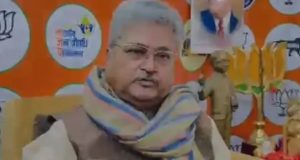DAINIK NATION BUREAU
One could accuse Prime Minister Narendra Modi of various weaknesses but an unskilled use of public relations and fantastic ability to convey the correct optics is certainly not one of them. Till now, that is. The fall in the value of the rupee since the start of 2018 and the associated and exponential rise in fuel prices (albeit also linked with the global rise of crude oil prices) makes for very poor optics and even poorer politics. Even television channels notoriously partisan towards the ruling dispensation have started questioning the price at the pump, especially as prices at the pump in heavily taxed cities like Mumbai inch closer to Rs 90 per litre.
The fact is that the Modi Government was blessed in 2014 with low global crude oil and commodity prices and the Government used this to dramatically raise taxes and cesses on retail fuel prices. This was to curtail the burgeoning fiscal deficit thanks to the profligacy of the previous UPA administration as well as to to fund infrastructure projects as the private sector starved of funds from India’s broken banking system could not raise money for Modi’s ambitious infrastructure building program. But that was then, and this is now.
Global crude oil prices have moved upwards and as a result, prices at the pump have had to rise. At the same time, the value of the rupee has depreciated significantly as US President Donald Trump talks up a trade war and with global uncertainty surrounding issues such as Iran and Britain’s impending departure from the European Union. There are some good economic reasons for the fall of the rupee, and the rupee was slightly overvalued compared to the US Dollar anyway; there are enough economists around who will tell you that the rupee still has a little more to fall. Whatever the reasons for these events, however, they make for horrible optics and on the back of the Reserve Bank of India basically saying that demonetisation was an exercise in futility, this isn’t good news for Modi. It is highly unlikely that Modi himself has not realised this fact. But the question is whether he can do much about it.
For one, global crude prices are likely to stabilise at current levels, but prices at the pump could still rise further. So, reducing Central cesses and taxes is one way to keep price rises in check and while Opposition-ruled States unlikely to agree to bringing fuel under the Goods and Services Tax regime at least those ruled and/or controlled by the Bharatiya Janata Party could cut State taxes as well. However, with these fuel taxes sustaining social sops, especially ahead of an election year, it will be difficult. As for the rupee, Modi could urge the RBI to intervene to an extent but his best hope is that once the rupee finds its natural level the electorate forgets about it. Interestingly, higher fuel prices do have a positive effect as they drive the sale of more economical vehicles which is not such a bad thing especially as India has to keep to commitments made in the Paris Accord and eco-friendly vehicles are good for the environment. Won’t get the BJP any votes, though. THE PIONEER
 Dainik Nation News Portal
Dainik Nation News Portal




